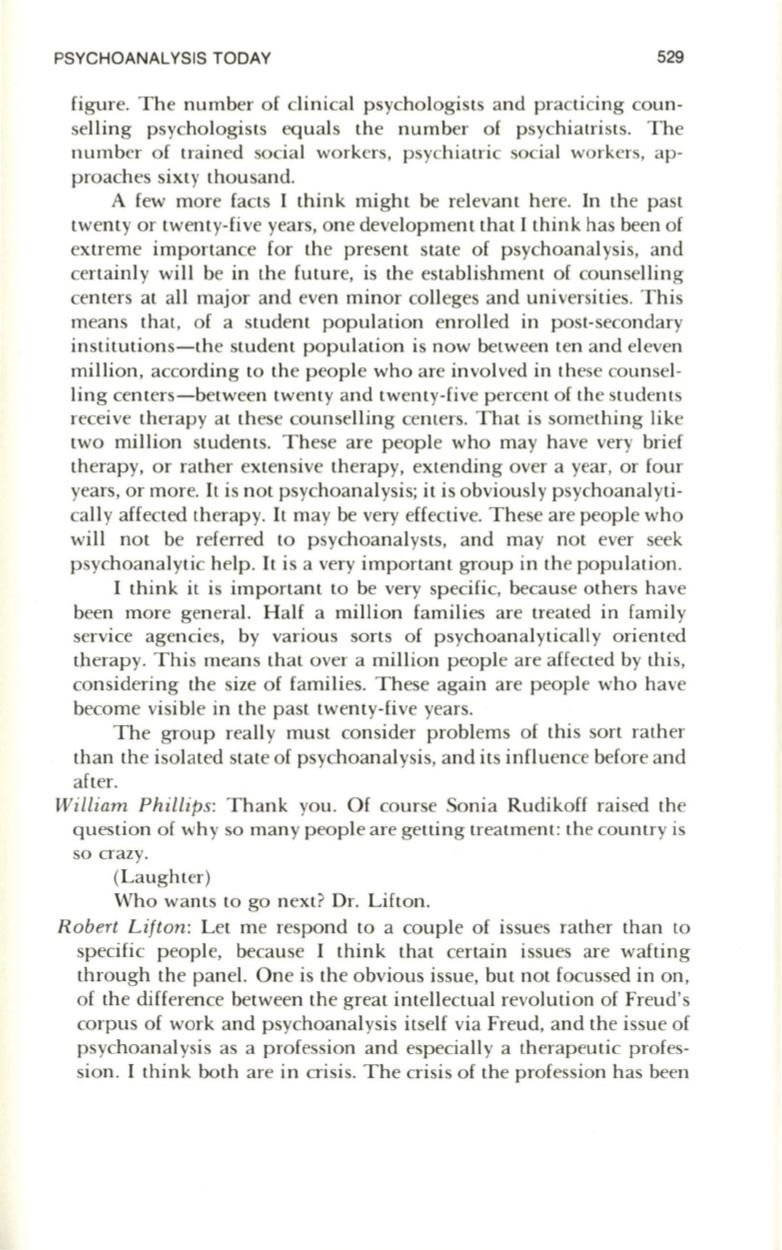
PSYCHOANALYSIS TODAY
529
figure. The number of clinical psychologists and practicing coun–
selling psychologists equals the number of psychiatrists. The
number of trained social workers, psychiatric social workers, ap–
proaches sixty thousand.
A few more facts I think might be relevant here. In the past
twenty or twenty-five years, one development that I think has been of
extreme importance for the present state of psychoanalysis, and
certainly will be in the future, is the establishment of counselling
centers at all major and even minor colleges and universities. This
means that, of a student population enrolled in post-secondary
institutions-the student population is now between ten and eleven
million, according to the people who are involved in these counsel–
ling centers-between twenty and twenty-five percent of the students
receive therapy at these counselling centers. That is something like
two million students. These are people who may have very brief
therapy, or rather extensive therapy, extending over a year, or four
years, or more. It is not psychoanalysis; it is obviously psychoanalyti–
cally affected therapy. It may be very effective. These are people who
will not be referred to psychoanalysts, and may not ever seek
psychoanalytic help. It is a very important group in the population.
I think it is important to be very specific, because others have
been more general. Half a million families are treated in family
service agencies, by various sorts of psychoanalytically oriented
therapy. This means that over a million people are affected by this,
considering the size of families. These again are people who have
become visible in the past twenty-five years.
The group really must consider problems of this sort rather
than the isolated state of psychoanalysis, and its influence before and
after.
William Phillips:
Thank you. Of course Sonia Rudikoff raised the
question of why so many people are getting treatment: the country is
so crazy.
(Laughter)
Who wants to go next? Dr. Lifton.
Robert Lifton:
Let me respond to a couple of issues rather than to
specific people, because I think that certain issues are wafting
through the panel. One is the obvious issue, but not focussed in on,
of the difference between the great intellectual revolution of Freud's
corpus of work and psychoanalysis itself via Freud, and the issue of
psychoanalysis as a profession and especially a therapeutic profes–
sion. I think both are in crisis. The crisis of the profession has been


